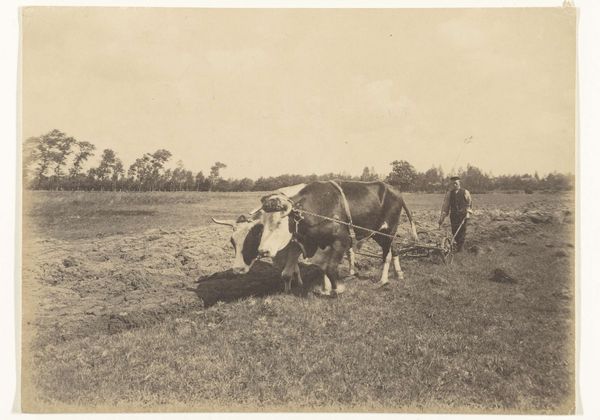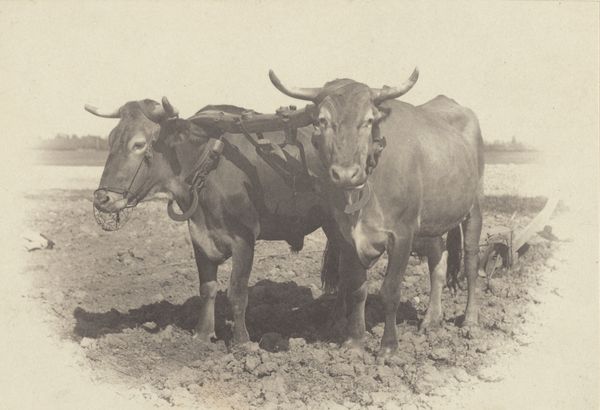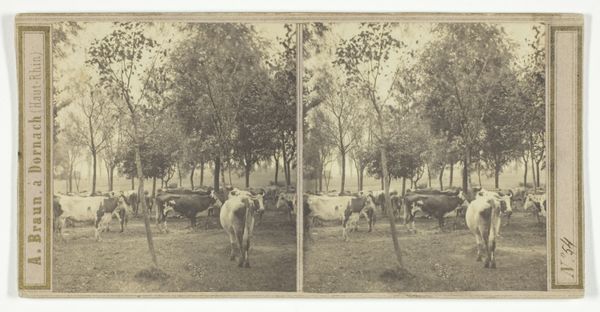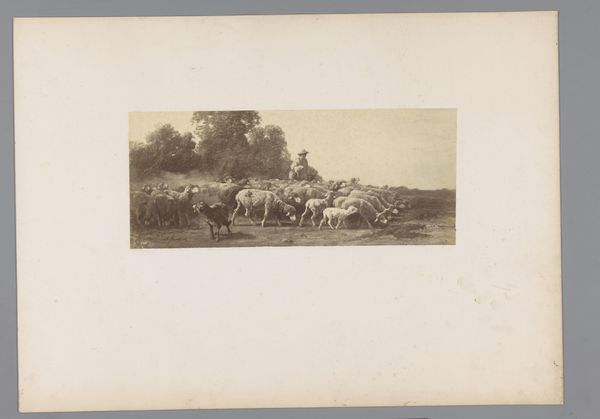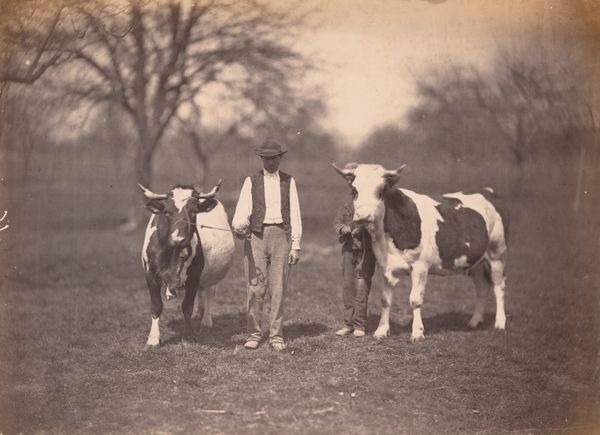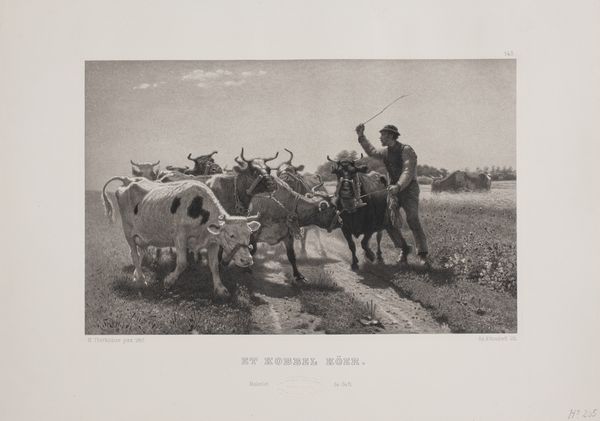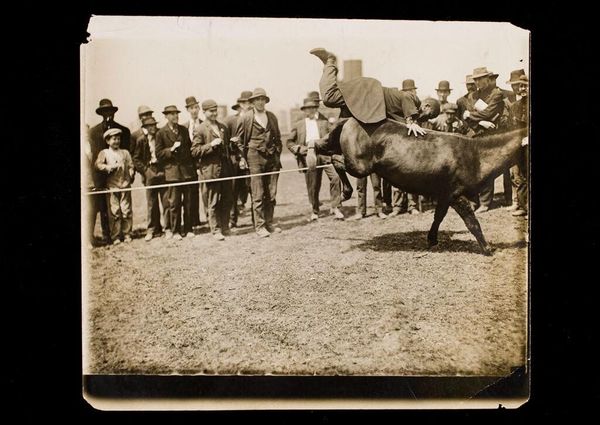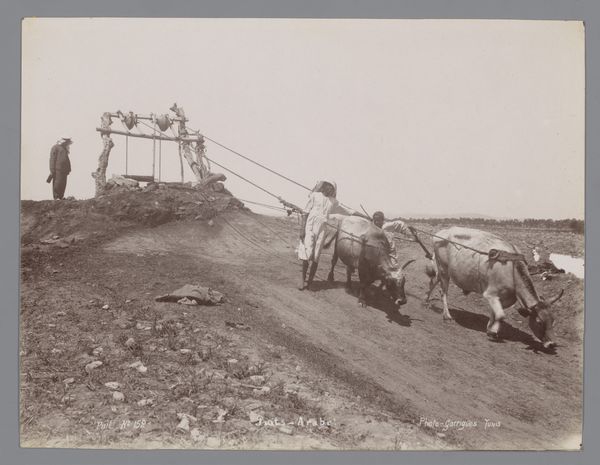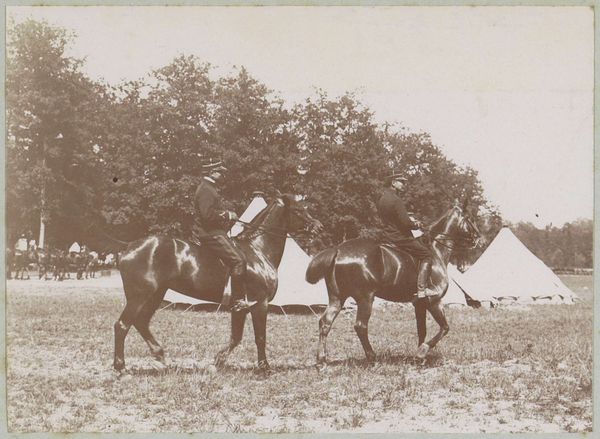
photography, albumen-print
#
portrait
#
landscape
#
photography
#
orientalism
#
genre-painting
#
albumen-print
#
realism
Dimensions: height 93 mm, width 157 mm
Copyright: Rijks Museum: Open Domain
Editor: Here we have Wilhelm Burger's photograph, "Man at work on the land with two buffalos in Thailand," dating from sometime between 1860 and 1890. It's an albumen print, giving it a warm, sepia tone. I’m struck by the composition - it feels like we’re seeing a very specific moment in time, a snapshot of everyday life. What strikes you about it? Curator: What grabs my attention is the explicit labor being depicted. The albumen print process itself is important to note – a complex, globally distributed technology in the mid-19th century, reliant on egg whites and silver. And consider this image not just as a window onto Thai agricultural labor, but also as a *product* of that labor, adding value as it travels and gets circulated. Where do you think the image was intended to be seen and who was it made for? Editor: Hmm, that's a good question! It seems like something made for a Western audience, perhaps as an ethnographic study, or even for commercial reasons. Does the photographic medium change your interpretation? Curator: Absolutely. The albumen print facilitated mass production and circulation, enabling visual documentation on a global scale. Early photography helped categorize and understand the labor of the world through visual depictions. However, it simultaneously turns it into a commodity that can be bought, sold, and collected far from its source. In effect, alienating the labor that it originally recorded. What’s next for the future of art as far as photographs? Editor: I see, so we're looking at the layering of different kinds of labor here - agricultural, photographic, even commercial! Thanks, this has opened my eyes to looking at it in a different light. Curator: Precisely. Thinking through the process helps unlock its meanings.
Comments
No comments
Be the first to comment and join the conversation on the ultimate creative platform.
